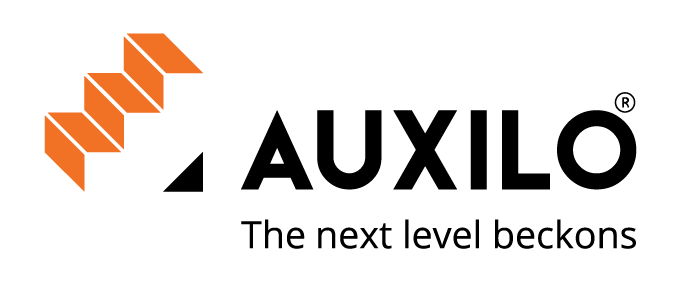Priya’s Dilemma: A Story That Hits Close to Home
Priya Sharma sat in her dorm room at Penn State, staring at her laptop screen with a mix of excitement and anxiety. The acceptance letter from Johns Hopkins for her master’s program had arrived, but so had news that made her stomach churn: the U.S. Department of State had just paused new F-1 visa appointments indefinitely. Her F-1 visa would expire in December 2025, and she had already planned a trip home to Mumbai for the holidays to visit her parents.
“Should I transfer my SEVIS record and risk being stuck if I need to travel, or wait for the visa appointments to reopen and potentially miss my program start?” she wondered. If you’re an international student facing a similar crossroads, you’re not alone. Many students are navigating the complex intersection of SEVIS transfers, visa renewals, and unprecedented processing delays. This guide will walk you through everything you need to know to make the right decision for your situation.
Understanding SEVIS Transfer: The Basics
The Student and Exchange Visitor Information System (SEVIS) transfer allows you to move your immigration record from one SEVP-certified school to another while maintaining your F-1 status. Think of it as electronically transferring your academic immigration history without starting from scratch.
Key Benefits of SEVIS Transfer
- Keep the Same SEVIS ID: You retain your SEVIS ID number, which may help you access certain benefits at your new school earlier, such as CPT eligibility.
- No Additional SEVIS Fee: You do not pay the SEVIS fee again.
- Stay in the U.S. Between Programs: You can remain in the U.S. between programs without leaving the country.
- Maintain F-1 Status: Your F-1 status remains intact even if your visa has expired, as long as you don’t travel internationally.
The Current Landscape: Visa Processing Pause and Policy Changes
As of May 2025, the U.S. Department of State temporarily paused scheduling new F-1, J-1, and M-1 visa appointments while reviewing social media screening procedures. This pause affects students who need new visas but doesn’t impact those already in the U.S. with valid status.
Additionally, significant changes to visa renewal eligibility took effect in February 2025. The dropbox (interview waiver) eligibility window was reduced from 48 months to just 12 months for visa renewals. This means if your visa expired more than 12 months ago, you’ll now need to attend an in-person interview rather than using the streamlined dropbox process.
Making the Right Choice: SEVIS Transfer vs. New Visa Application
The decision between transferring your SEVIS record and applying for a new visa depends on several factors: your current visa status, travel plans, timeline, and risk tolerance.
When SEVIS Transfer Makes Sense
- During the Current Visa Processing Pause: If you’re already in the U.S. and your new program starts soon, SEVIS transfer is currently your only viable option for continuing your studies without interruption.
- Cost-Conscious Students: SEVIS transfer costs nothing additional, while a new visa application requires paying the visa application fee.
- No Immediate Travel Plans: If you don’t plan to travel internationally before your visa expires, transferring your SEVIS record allows you to continue your studies seamlessly.
When a New Visa Application is Better
- Frequent International Travel: If you need to travel home regularly or have family emergencies, a fresh visa gives you full travel flexibility for the duration of your new program.
- Visa Expiring Soon: If your current visa expires within six months and you’ll need renewal anyway, it’s often more efficient to get a new visa that covers your entire graduate program.
Comparison of SEVIS Transfer and New Visa Application:
| Scenario | Benefits | Risks | Notes |
|---|---|---|---|
| SEVIS Transfer | 1. No need for immediate visa renewal 2. Avoids visa appointment backlog 3. Can remain in U.S. between programs | 1. Must not travel internationally after visa expiry 2. SEVIS transfer must be handled correctly 3. Immigration rules can change | 1. Standard option if staying in U.S. Requires coordination between schools |
| New Visa Application | 1. Fresh visa validity for full program 2. Easier future travel | 1. Uncertain timeline due to appointment pause 2. Risk of missing program start | 1. Only possible if appointments open in time |
Dropbox Eligibility for F-1 Visa Renewal After SEVIS Transfer
Common Pitfalls and How to Avoid Them
Several mistakes can derail your SEVIS transfer:
- Employment Authorization Confusion: Any work authorization (on-campus employment, CPT, or OPT) ends on your SEVIS release date, regardless of what your Employment Authorization Document (EAD) says. Plan to stop working before your transfer date to avoid status violations.
- Last-Minute Applications: Submitting your transfer request too close to your desired release date can cause processing delays. Always allow several business days minimum, and submit your request at least two weeks before your preferred date.
- Travel Document Mix-ups: Using the wrong I-20 for travel is one of the most serious mistakes students make. After your release date, your old I-20 becomes completely invalid for travel purposes, even if your visa is still valid.
- Missing the 15-Day Reporting Deadline: After your new program starts, you have exactly 15 days to report to your new DSO and enroll in a full course load. Missing this deadline can result in SEVIS termination.
The SEVIS Transfer Process: Step-by-Step Guide
Successfully transferring your SEVIS record requires careful planning and attention to deadlines. The process typically takes a few business days once submitted, but preparation should begin months in advance.
Eligibility Requirements
- Maintain F-1 Status: You’re currently enrolled full-time or within your 60-day grace period.
- Admission Letter: You have an official admission letter from a SEVP-certified institution.
- Program Timing: Your new program starts within five months of your current program completion or last enrollment date.
- No Status Violations: You have no violations of your current F-1 status.
Critical Timing Considerations
The most crucial aspect of SEVIS transfer is choosing the right release date. This is when your SEVIS record officially moves from your current school to your new institution.
- Continuing Students: Schedule the release date after your final exams or semester end date, but before your new program begins.
- Graduating Students: Your release date must be within your 60-day grace period after graduation but before starting your new program.
- OPT Students: You can transfer either before your OPT ends or within the 60-day grace period following OPT completion.
Documentation Requirements
- Official Admission Letter: From your new school, including program start date.
- SEVIS School Code: From your new institution.
- DSO Contact Information: For your new school’s Designated School Official.
- Financial Documentation: Showing ability to support your studies.
- Academic Transcripts and Enrollment Verification.
SEVIS Transfer Process Checklist:
| Step | Desc | Timing |
|---|---|---|
| Confirm eligibility | Ensure you are eligibility | Before starting |
| Obtain admission | Get official admission | Before transfer |
| Choose SEVIS release date | Coordinate with DSO | After final exams |
| Submit transfer request | Request SEVIS transfer | At least 2 weeks before release date |
| Receive new I-20 | Get ‘transfer pending’ I-20 | After release date |
| Report to new DSO | Check in and enroll | Within 15 days |
Travel Considerations and Visa Renewal After Transfer
One of the most complex aspects of SEVIS transfer involves understanding how it affects your ability to travel internationally and renew your visa.
Before Your Transfer Release Date
You can travel internationally using your current school’s I-20 and valid F-1 visa, provided the DSO travel signature is less than 12 months old. However, plan carefully to ensure you return before your release date, as your current I-20 becomes invalid afterward.
After Your Transfer Release Date
Once your SEVIS record transfers, you must use your new “transfer pending” I-20 for any international travel. Your old I-20 is no longer valid, and attempting to use it could result in entry denial.
Visa Renewal with Transferred SEVIS Records
Students who transfer their SEVIS records can still use the dropbox process for visa renewal, provided they meet current eligibility requirements. The key factors include:
- Previous F-1 Visa Validity: Your previous F-1 visa must be valid or expired within the last 12 months.
- Same Visa Category: You’re applying for the same visa category (F-1).
- No Recent Refusals: You haven’t been refused a visa since your last issuance.
- Country of Residence: You’re applying at the consulate in your country of usual residence.
You can apply for visa renewal before your current visa expires, such as during winter break travel. Many students find this proactive approach reduces stress and ensures travel flexibility.
Dropbox Eligibility for F-1 Visa Renewal After SEVIS Transfer:
| Scenario | Dropbox Elig. | Notes |
|---|---|---|
| Expired < 12 months | Eligible | Same category, no refusals |
| Visa valid | Eligible | Renew before expiry |
| Expired > 12 months | Not eligible | Attend interview |
Strategies for Success in Uncertain Times
Given the current visa processing challenges and policy changes, consider these strategies to protect your academic journey:
- Build Buffer Time: With visa appointment delays and processing uncertainties, plan every step with extra time. If you’re planning to travel home for holidays, schedule visa renewal well in advance or consider postponing travel until you have a renewed visa.
- Maintain Open Communication: Keep both your current and future DSOs informed of your plans throughout the process. They can provide school-specific guidance and help you navigate unexpected challenges.
- Consider Professional Consultation: For complex situations involving OPT, previous status violations, or unique circumstances, consulting with an immigration attorney may be worthwhile. The investment in professional advice can prevent costly mistakes.
Looking Ahead: Making Your Decision
Returning to Priya’s story, she ultimately decided to transfer her SEVIS record to Johns Hopkins, allowing her to start her master’s program on time despite the visa processing pause. She scheduled her visa renewal appointment for her December trip home, taking advantage of the dropbox process since her visa had expired only eight months prior.
Your situation may be different, but the key is making an informed decision based on your specific circumstances, timeline, and priorities. Use the comparison framework and checklist provided in this guide to evaluate your options systematically.
Your Next Steps
Whether you choose SEVIS transfer or apply for a new visa, start the process early and stay organized. The current immigration environment requires more planning and flexibility than ever before, but with proper preparation, you can successfully navigate the transition to your new academic program.
Remember that immigration regulations can change rapidly, and this guide provides general information only. Always consult with your designated school officials for personalized guidance based on your specific situation and the most current regulations.
Your educational journey in the United States is an investment in your future. By understanding your options and planning carefully, you can overcome the current challenges and continue pursuing your academic and career goals with confidence.








































